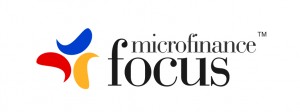Reaching the Financially Excluded and Demonstrating Impact
13:30 to 15:00 CST: How can microfinance institutions and organizations improve data collection and goal assessment with regard to social services? How do banks, NGOs and MFIs coordinate outreach to the client in order to reach the most financially excluded? What resources and best practices are available by which institutions can meet their social goals and measure their impact? These questions and more were addressed at the AMF 2014 session on demonstrating impact.
Moderator Katie Hoffman (SPTF) opened the session by introducing Social Performance Management (SPM) as a way to approach these challenges in the financial inclusion sector. Social Performance Management is a tool which allows the financial inclusion industry to “bridge the gap” between poor communities who receive financial and social services, and the organizations and professionals who are delivering these services.
“Appropriately,” Hoffman said, “on our panel today we have an MFI, and investor and a network, and each will demonstrate how their particular company uses SPM to improve outreach and achieve goals in social services.”
Hoffman went on to explain that social performance management allows the effective translation of an institution’s mission into practice. It provides information about what you are doing systematically to measure your social impact and reach your goals. Normally in the industry, key performance indicators measure financial performance, but not many institutions have means to measure and assess social performance, or how well the social goals of the provider are being met. Social Performance Management was developed to specifically measure this side of the financial inclusion picture.
Moreover, SPM helps MFIs target and reach their targeted client base. In fact, if you are not using Social Performance Management techniques – if you are not paying attention to your social performance – you may be harming clients. One example would be not assessing correctly your client’s ability to repay. Previously the industry lacked best practices.
In answer to this need, MFIs, investors and networks came together to develop 19 Universal Standards for Social Performance Management. These standards define what microfinance institutions need to achieve socially, and include the essential practices that should be implemented to reach the standards. These assessment and implementation resources were developed by SPTF with industry partners, including MIX, microfinance ratinag agencies, as well as social investors.
Dina Pons, Manager, Incofin, spoke from the point of view of an investment firm linking investors with MFIs. Her story illustrates the value of SPM for all stakeholders in financial inclusion. Pons made it clear that her company’s mission is double bottom line, meaning achieving both financial and social returns:
“We are social investors. and uses social performance management to achieve the goals of financial inclusion. As a social investment company we need to track social outcome indicators for our investees. This helps us find the right investor/investee match. We do not request investees to systematically measure social impact.
“As equity investors, we encourage MFIs to engage in outcome indicators tracking in line with their social mission. As lenders and equity investors we require social performance management tracking. We check and measure systems and procedures that translate the MFI’s social mission into practice.”
Pons also said that it has been one of Incofin’s practice to include social undetakings in its loan agreements referring to SPM (for instance, Incofin request its debt investees to “proactively implement the client protection principles during the term of the loan).
Dependence on data systems and data analysis is emerging as a key question at the AMF2014 Conference. It is becoming clear that tools such as Social Performance Management is a requirement for the industry if it intends to move forward in its social goals (poverty relief, financial capability, healthcare and education).
Related to this, a member of the group asked the pertinent question:
“With so many tools available, at what point do the costs outweigh the benefits for MFIs. At what point does the implementation of Cost Performance Management become more of a burden than a help?”
Pons responded, “We have developed SPM Standards which gathers all best practices in SPM in financial inclusion. It is the guidebook to the implementation of SPM. The Standards includes the Client Protection Principles, in an attempt to harmonize all SPM practices within one set of Standards.”
In sum, the panelists focused on Social Performance Management (SPM) as a way to set up benchmarks for assessing and reporting performance against financial and social standards. SPM is an essential tool used by MCPI to provide its network of microfinance institutions with the information they need to make accurate decisions that move their missions forward and reach the clients who most need their help.
At the same time, another theme emerged: that data collection and analysis is changing the landscape of microfinance and financial inclusion. Data is needed to identify those who are most financially excluded, as well as to develop appropriate products for given communities and clients. Data can also track success of financial inclusion programs and where problems are occurring.
Moderating this session was Ms. Katie Hoffmann, Manager, Responsible Inclusive Finance, Socdial Performance Task Force (SPTF). Speakers were Ms. Dina Pons, East Asia Regional Director & Social Performance Manager, Incofin; Ms. Sophy Pum, Research Head, AMK www.amkcambodia.com/ , Cambodia; Mr. Allan Robert Sicat, Executive Director, Microfinance Council of the Philippines (MCPI)
The facilitator was The Social Performance Task Force.






